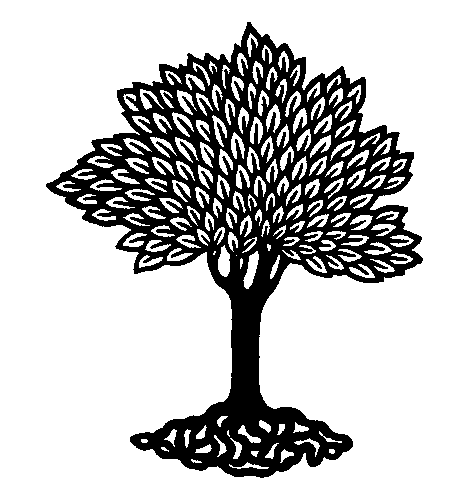
 |
Plant Taxonomy (BIOL308) - Stephen G. Saupe, Ph.D.; Biology Department, College of St. Benedict/St. John's University, Collegeville, MN 56321; ssaupe@csbsju.edu; http://www.employees.csbsju.edu/ssaupe/ |
Floral Formulas
A floral formula is a convenient way to store and retrieve information about plants. There is no one correct method for writing a floral formula. We will use a version that is modified from one of my graduate school mentors at the University of Illinois, Dr. David A. Young. This version is similar to that of Hickey and King (1999).
The basic floral formula summarizes the following features (in order):
Summary:
The features listed above are written out
separated by a semicolon. If the feature is sometimes present it is included in
parentheses. Numerous parts are indicated with the infinity symbol. Here are a few
examples.
Floral Formula #1: *; c (♂ ♀, D); K 5; C 5 (0); A 5-10 (5-10); G 2-5 ; cap., (ach)
Interpretation: Fls. actinomorphic; bisexual (rarely unisexual and then the plants dioecious); calyx of 5 basally connate sepals, corolla of 5 distinct petals (or rarely apetalous), stamens 5-10 and distinct (or rarely 5-10 and basally connate), gynoecium syncarpous with 2-5 carpels (imagine a circle around the 2-5), ovary superior; fruit a capsule (or rarely an achene).
Floral Formula #2:
*;
♂
♀, M
♂
fls.: K 3-6; C 3-6 (3-6); A 3-5; G 0
♀
fls.: K 3-6; C O, G 5-9; ach
Interpretation: Fls. actinomorphic; unisexual and the plants monoecious; staminate fls. with a calyx of 3-6 basally connate sepals, corolla of 3-6 free or sometimes connate petals, stamens 3-5 and distinct; pistillate fls. with a calyx of 3-6 basally connate or free sepals (imagine a dotted line under the 3-6), corolla absent (=apetalous), gynoecium apocarpous with 5-9 carpels, ovary superior; fruit an achene.
Floral Formula #3:
♂
♀, M (D)
♂
fls.: P
0; A 1; G 0
♀ fls.: P 0; A 0; G
3; samara-like nut
Interpretation: Fls. unisexual and the plants typically monoecious or sometimes dioecious; staminate fls. without a perianth (naked) and with a single stamen; pistillate fls. naked, gynoecium syncarpous with three carpels (imagine a circle around the 3), ovary superior; fruit a winged samara-like nut.
Floral Formula #4: z; c; K 5, 5; C 5; A 5 (5); G 2; 2 foll
Interpretation: Fls. zygomorphic; bisexual; calyx of 5 free or basally connate sepals; corolla of 5 connate petals, stamens 5 and distinct or sometimes connate, gynoecium apocarpous with 2 carpels that are apically fused (imagine a line over the 2), ovary superior; androecium adnate to gynoecium (imagine a line drawn over the A and G); fruit of 2 follicles.
|
| Top | Plant Tax. Home | SGS Home | Disclaimer | |
Last updated:
09/10/2007 / � Copyright by SG
Saupe